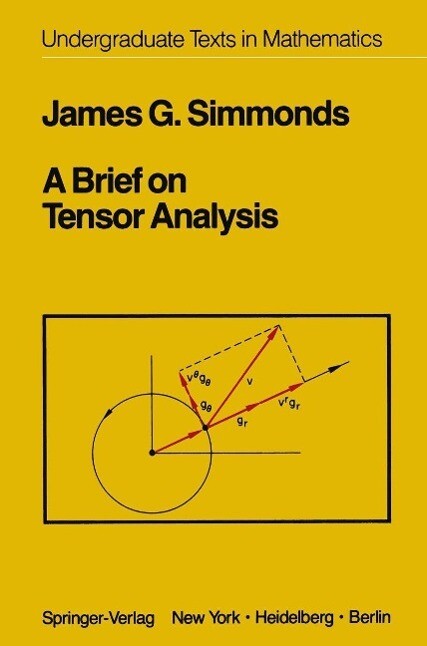When I was an undergraduate, working as a co-op student at North American Aviation, I tried to learn something about tensors. In the Aeronautical En gineering Department at MIT, I had just finished an introductory course in classical mechanics that so impressed me that to this day I cannot watch a plane in flight-especially in a tum-without imaging it bristling with vec tors. Near the end of the course the professor showed that, if an airplane is treated as a rigid body, there arises a mysterious collection of rather simple looking integrals called the components of the moment of inertia tensor. Tensor-what power those two syllables seemed to resonate. I had heard the word once before, in an aside by a graduate instructor to the cognoscenti in the front row of a course in strength of materials. "What the book calls stress is actually a tensor. . . ." With my interest twice piqued and with time off from fighting the brush fires of a demanding curriculum, I was ready for my first serious effort at self instruction. In Los Angeles, after several tries, I found a store with a book on tensor analysis. In my mind I had rehearsed the scene in which a graduate stu dent or professor, spying me there, would shout, "You're an undergraduate.
Inhaltsverzeichnis
I Introduction: Vectors and Tensors. - Three-Dimensional Euclidean Space. - Directed Line Segments. - Addition of Two Vectors. - Multiplication of a Vector v by a Scalar ? . - Things That Vectors May Represent. - Cartesian Coordinates. - The Dot Product. - Cartesian Base Vectors. - The Interpretation of Vector Addition. - The Cross Product. - Alternate Interpretation of the Dot and Cross Product. Tensors. - Definitions. - The Cartesian Components of a Second Order Tensor. - The Cartesian Basis for Second Order Tensors. - Exercises. - II General Bases and Tensor Notation. - General Bases. - The Jacobian of a Basis Is Nonzero. - The Summation Convention. - Computing the Dot Product in a General Basis. - Reciprocal Base Vectors. - The Roof (Contravariant) and Cellar (Covariant) Components of a Vector. - Simplification of the Component Form of the Dot Product in a General Basis. - Computing the Cross Product in a General Basis. - A Second Order Tensor Has Four Sets of Components in General. - Change of Basis. - Exercises. - III Newton s Law and Tensor Calculus. - Rigid Bodies. - New Conservation Laws. - Nomenclature. - Newton s Law in Cartesian Components. - Newton s Law in Plane Polar Coordinates. - The Physical Components of a Vector. - The Christoffel Symbols. - General Three-Dimensional Coordinates. - Newton s Law in General Coordinates. - Computation of the Christoffel Symbols. - An Alternate Formula for Computing the Christoffel Symbols. - A Change of Coordinates. - Transformation of the Christoffel Symbols. - Exercises. - IV The Gradient Operator, Covariant Differentiation, and the Divergence Theorem. - The Gradient. - Linear and Nonlinear Eigenvalue Problems. - The Del or Gradient Operator. - The Divergence, Curl, and Gradient of a Vector Field. - The Invariance of ? · v, ? × v, and ? v. - TheCovariant Derivative. - The Component Forms of ? · v, ? × v, and ? v. - The Kinematics of Continuum Mechanics. - The Divergence Theorem. - Exercises.

































